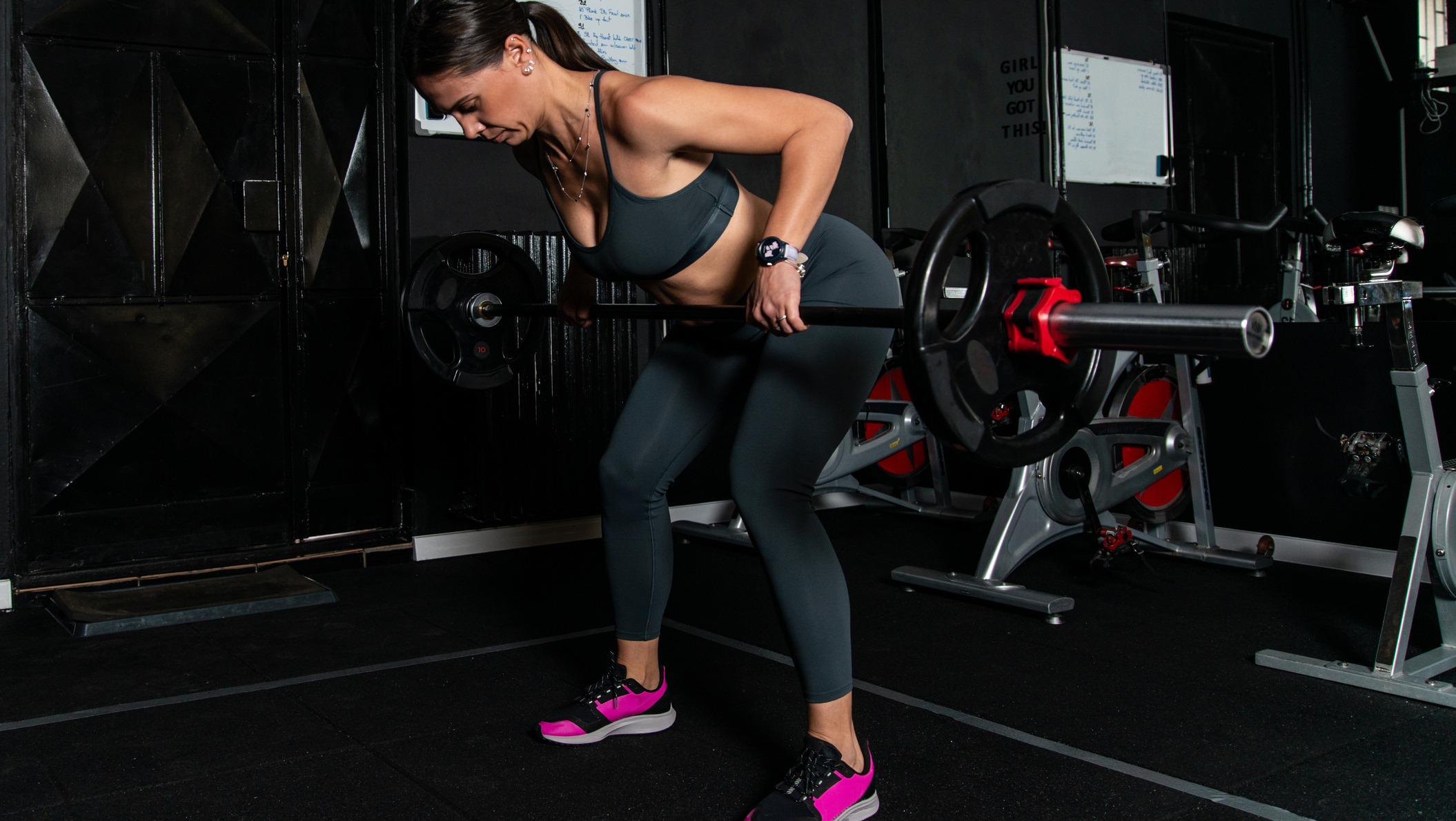How To Do The Pendlay Row
Are you ready for a better barbell row?

All rows are great for developing pulling strength and building your back muscles, consequently improving your posture. And if you’re someone with a taste for the bench press, you’ll also find that adding rows to your routine will help balance your upper body.
There are plenty of rows to choose from, but only one is named after its creator. Weightlifting coach Glenn Pendlay wasn’t looking to create his own exercise – he just believed he had a better way of performing the barbell row.
Nowadays it’s a variation in its own right and one with specific benefits that differ from those of the barbell row. To help you master the Pendlay row, we called on NSCA-accredited strength and conditioning coach Andrew Reay, who spoke to us on behalf of sports coach booking platform Sport Session.
What are the differences between the Pendlay row and barbell row?
There are two primary differences between these two barbell exercises. The first is that with the Pendlay row you return the bar to the floor at the end of each rep. The second is that with the Pendlay row you hinge further forwards so your back is at a 20-30° angle to the floor, closer to parallel than in the standard row.
Benefits Of The Pendlay Row
The bent-over row is a fantastic back-building exercise, both in terms of strength and size. However, inexperienced lifters can often use momentum to bounce out of the bottom of the lift and propel the bar towards their midline. The Pendlay row, with its dead stop at the bottom of each rep, doesn’t allow for this.
“It improves the ability of the muscles to create the force needed to move the weight,” says Reay. “When you’re bent over, you get a little bit of stretch and recoil from the tendons. When you drop the bar you take that out, so you’re just using pure muscle to get the bar moving.
“The Pendlay row only really works the concentric portion of the lift – the acceleration of the bar – so you don’t need to control it back down again. This means you can lift a bit heavier and you can reset yourself after each rep, so you can be a bit more aggressive with the pull from the floor.
“The Pendlay row can just give you a slightly different stimulus as well. If you’ve been doing bent-over rows for a long time and feel like you’ve hit a plateau, try tweaking the weight, position and exercise for a time to break through this.”
Get the Coach Newsletter
Sign up for workout ideas, training advice, reviews of the latest gear and more.
How To Do The Pendlay Row

“Get yourself into a bent-over row position, hinged at the hips with your knees slightly bent and a neutral spine,” says Reay. Your back should be at a 20-30° angle to the floor. “Put the bar on the floor in front of you, underneath your shoulders when you’re bent over, and see if you can grip it while maintaining that position.” Use an overhand grip (with your palms facing you) and hands slightly wider than shoulder-width apart.
Reay says taller people may struggle to hold their back flat in the starting position of the Pendlay row, when the bar is on the floor. “If you are a little bit taller, or if you watch your form and see that you can’t keep your back in a fairly neutral position, you might just want to raise the bar a bit.” You can do this by placing either end of the bar on some short lifting blocks or weight plates.
From there, brace your core, retract your shoulder blades and explosively pull the bar towards your stomach, rather than directly upwards. “It should arc slightly towards your legs,” says Reay, “starting underneath your shoulders and finishing further towards your bellybutton.”
Pendlay Row Variations
Barbell row

The original big-muscle move, barbell or bent-over rows require constant tension. This means you have to lift a lighter weight, but the exercise is great for hypertrophy training, maximising your time under tension and fatiguing the targeted muscles.
The set-up is slightly different, requiring either a deadlift or rack pull so you can stand holding the barbell in front of your thighs. From there perform a Romanian deadlift, hinging forwards at the hips until your back is anywhere between 30-45° to the floor. From there, row the barbell to your bellybutton, then lower under control.
One-arm dumbbell row

This variation switches the type of free weight used for a slightly larger range of motion, and uses a weights bench to help you maintain a solid back position which can be especially helpful for beginners. It is also a unilateral movement, using one side of your body at a time. This is a good way to highlight and address muscle imbalances.
Place your left knee and left hand on the bench and hold a dumbbell in your right hand with a neutral gip. Retract your shoulder blade, then lift the dumbbell to your body. The weight should start beneath your shoulder, and end pulled in to your stomach.
About Our Expert
Andrew Reay is an NSCA-accredited strength and conditioning coach, and the current head of sports and conditioning at physiotherapist chain Pure Sports Med. Reay is a former professional rugby player, with clubs including Harlequins and Bristol.

Harry covers news, reviews and features for Coach, Fit&Well and Live Science. With over a decade of training experience, he has tried everything from powerlifting to gymnastics, cardio to CrossFit, all in a bid to find fun ways of building a healthy, functional body.
- Nick Harris-FrySenior writer
